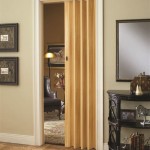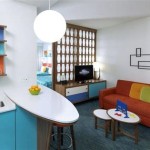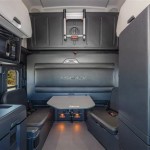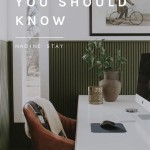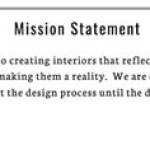Mood Board Examples for Interior Design
A mood board is a visual representation of the overall design direction for a space. It serves as a reference point for designers and clients, showcasing the desired style, colors, textures, and materials. It helps to establish a cohesive aesthetic and ensures all design decisions align with the initial vision. This article explores various examples of mood boards for interior design, highlighting diverse styles and functionalities.
Mood Board for a Modern Minimalist Living Room
A contemporary minimalist living room often prioritizes clean lines, neutral colors, and functional pieces. A mood board for such a space might include images of: *
Furniture:
Sleek, low-profile sofas, minimalist coffee tables, geometric side tables, and modern armchairs. *Colors:
White, gray, black, and muted shades of blue, green, or yellow. *Materials:
Natural wood, marble, metal, and leather. *Textures:
Smooth surfaces, fine-weave fabrics, and subtle patterns. *Lighting:
Floor lamps with geometric bases, sleek pendant lights, and recessed lighting. *Artworks:
Abstract paintings, minimalist sculptures, or black and white photography. This mood board emphasizes a clean, uncluttered aesthetic with a focus on functionality and simplicity.Mood Board for a Rustic Farmhouse Kitchen
For a rustic farmhouse kitchen, the mood board should evoke a sense of warmth, comfort, and natural beauty. Key elements might include: *
Furniture:
Wooden kitchen cabinets, distressed tables, vintage bar stools, and open shelving. *Colors:
Warm neutrals, such as cream, brown, beige, and soft green. *Materials:
Natural wood, stone, reclaimed materials, and metal accents. *Textures:
Rough wood, woven textiles, distressed finishes, and organic elements. *Lighting:
Pendant lights with exposed bulbs, antique lanterns, and warm-toned lighting. *Artworks:
Vintage prints, botanical illustrations, and rustic pottery. This mood board emphasizes a cozy and inviting atmosphere with a focus on natural elements and vintage charm.Mood Board for a Glamorous Bedroom
A glamorous bedroom evokes a sense of luxury, opulence, and sophistication. A mood board for such a space might feature: *
Furniture:
Upholstered headboards, velvet armchairs, mirrored dressing tables, and sparkling chandeliers. *Colors:
Rich jewel tones, metallic finishes, and accents of black, gold, or silver. *Materials:
Velvet, silk, satin, faux fur, and polished metals. *Textures:
Smooth and luxurious fabrics, shimmering surfaces, and opulent details. *Lighting:
Crystal chandeliers, ornate sconces, and soft, ambient lighting. *Artworks:
Paintings with bold colors, glamorous photography, and decorative mirrors. This mood board emphasizes a luxurious and indulgent atmosphere with a focus on rich textures and vibrant colors.Mood Board Best Practices
There are several best practices to consider when creating a mood board: *
Define the Project:
Clearly articulate the client's needs, desired aesthetic, and budget. *Gather Inspiration:
Collect images, patterns, textures, and colors that resonate with the design direction. *Use Visual Hierarchy:
Arrange elements in a way that draws attention to key components and sets a clear visual direction. *Ensure Cohesion:
Ensure that all components on the mood board complement each other and create a unified aesthetic. *Present Clearly:
Clearly communicate the mood board's message to the client and explain the rationale behind each design choice. By following these guidelines, designers can create impactful mood boards that effectively communicate their design vision and guide the entire project.Mood boards are indispensable tools for interior design, allowing designers to visually articulate a project's style and aesthetic. By effectively utilizing mood boards, designers can create stunning and cohesive spaces that meet their clients' expectations and exceed their design goals.

How To Make An Interior Design Mood Board Gal At Home Studio

How To Create An Interior Design Mood Board Vevano

Making An Interior Design Mood Board Instyle Deco Paris

How To Create A Mood Board For Interior Design Projects

How To Make An Interior Design Mood Board 3 Easy Options Greenhouse Studio

How To Make Design Mood Boards Use Them Decorate Your Home Love Grows Wild

How To Make An Interior Design Mood Board 3 Easy Options Greenhouse Studio

10 Best Mood Board And For Interior Designers Foyr

How To Make A Mood Board 6 Tools Visualize Your Ideas Alma De Luce

Mood Board For Interior Design Elementi Interiors Bangkok

